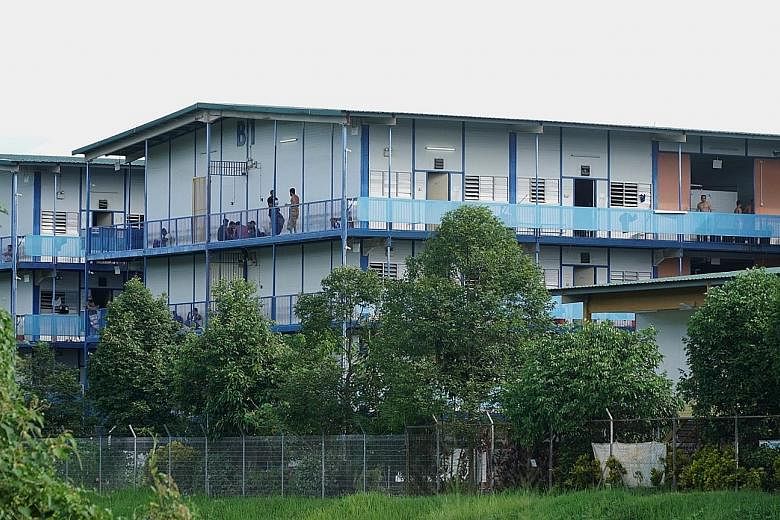New standards for migrant worker dormitories will enhance workers' well-being, said dormitory operators here, but will come at a cost increase of at least 50 per cent to implement in existing dorms.
Under new specifications announced by the Ministry of Manpower (MOM) on Monday, dorms will have no more than 10 beds per room, with only single-deck beds and 1m spacing between them. Each room now holds 12 to 16 beds.
In recent weeks, the living conditions of foreign workers in dormitories have come under scrutiny as such workers account for more than 90 per cent of Covid-19 cases here.
Each resident will enjoy 6 sq m of living space, not including shared facilities, compared with the current 4.5 sq m, which includes shared facilities. Not more than five people will share a toilet, bathroom and sink, compared with 15 people currently.
As a result, costs will increase significantly on all fronts, said dorm operators, with most agreeing on an increase of at least 50 per cent as a conservative estimate.
Mr Calvin Lim, general manager of CDPL (Tuas) Dormitory, said: "If all things stayed constant and we just reduced double-deck beds to single beds, the cost per bed would already be doubled. And that's excluding the other changes and the additional operational costs that are bound to increase over time."
Dormitory Association of Singapore president Johnathan Cheah expects building costs to double, along with a 50 per cent increase in operating costs. These should be shared by employers, dorm operators and the Government, he said.
"Dorm operations might well be a 24/7 feature in future as more manpower would be needed to implement the measures, such as stepping up on housekeeping," he said.
Centurion chief executive Kong Chee Min said existing and interested operators would have to consider the cost of development and operations, as well as the revenue potential in the open market, to assess the viability of the business.
"But there will be a continued need for migrant worker housing and purpose-built dormitories will continue to be the best solution to address such housing needs in land-scarce Singapore," he said.
The new specifications will be piloted at upcoming Quick Build Dormitories - short-to medium-term housing for around 25,000 workers. The Straits Times understands that new and existing operators are likely to be invited to run these upcoming dorms.
Another 11 purpose-built dorms to house close to 60,000 workers are in the works and are expected to be ready in the next two years.
Mr Jack Ng, facilities manager of Hulett Dormitory, said he will look into upgrading his 1,200-bed factory-converted dormitory in Senoko after some workers can be rehoused in the Quick Build Dormitories.
Dr Harvey Neo, programme head at the Lee Kuan Yew Centre for Innovative Cities at the Singapore University of Technology and Design, said the new guidelines are a "significant improvement", as they distinguish between different living spaces and reduce density in the dorms.
Regardless of how the cost is distributed among stakeholders, he said, it should not filter down to the foreign workers, as there is "no compelling reason" to do so.
Mr Lee Chew Chiat, government and public services industry leader at Deloitte South-east Asia, said: "The fundamental question should be: Why do we need these new measures? If we are doing it for the right reasons, then it's wise to implement them and then work to increase the benefit over cost."
• Additional reporting by Joanna Seow
Correction note: The story has been updated to reflect the correct capacity of the 11 purpose-built dorms being built.












